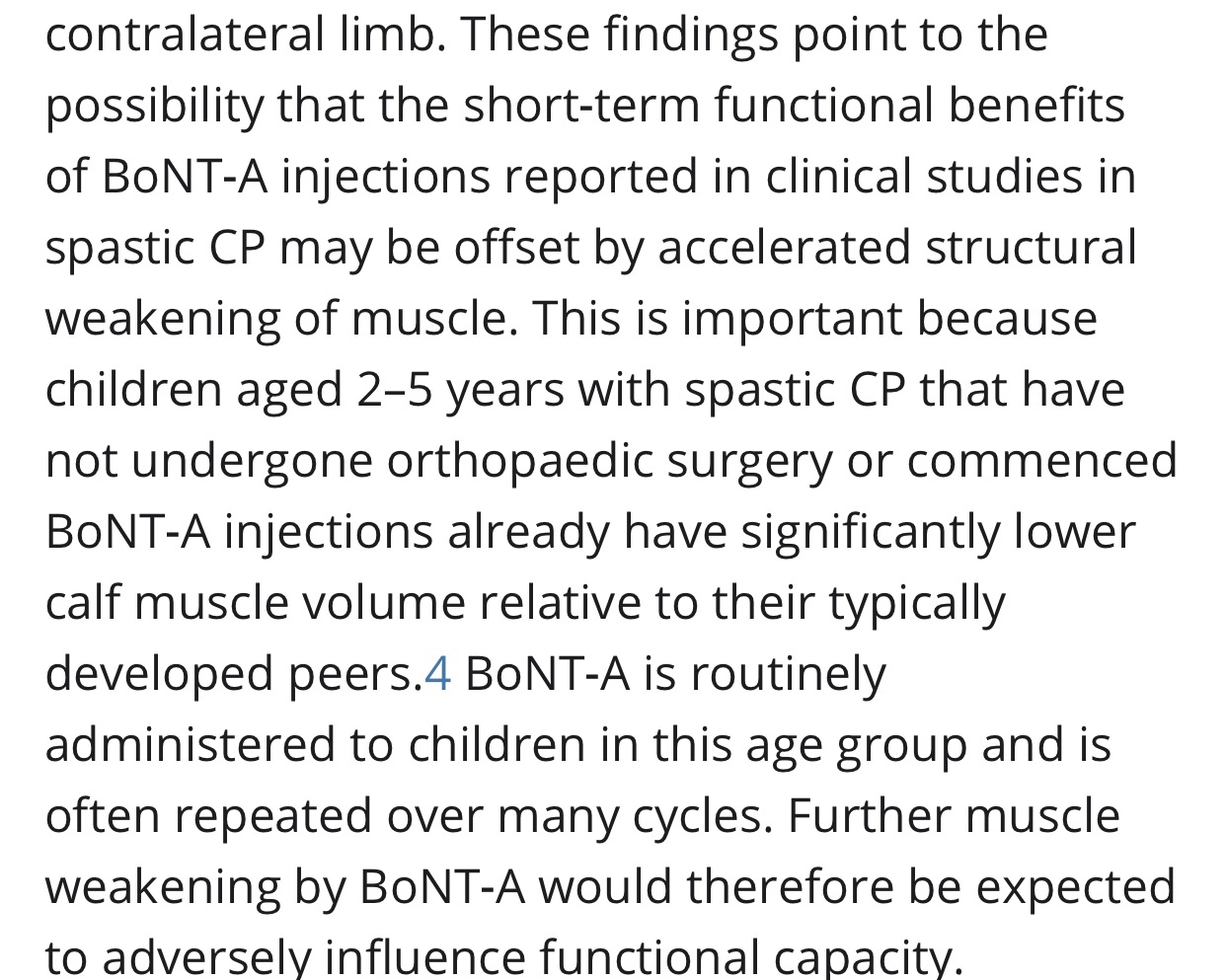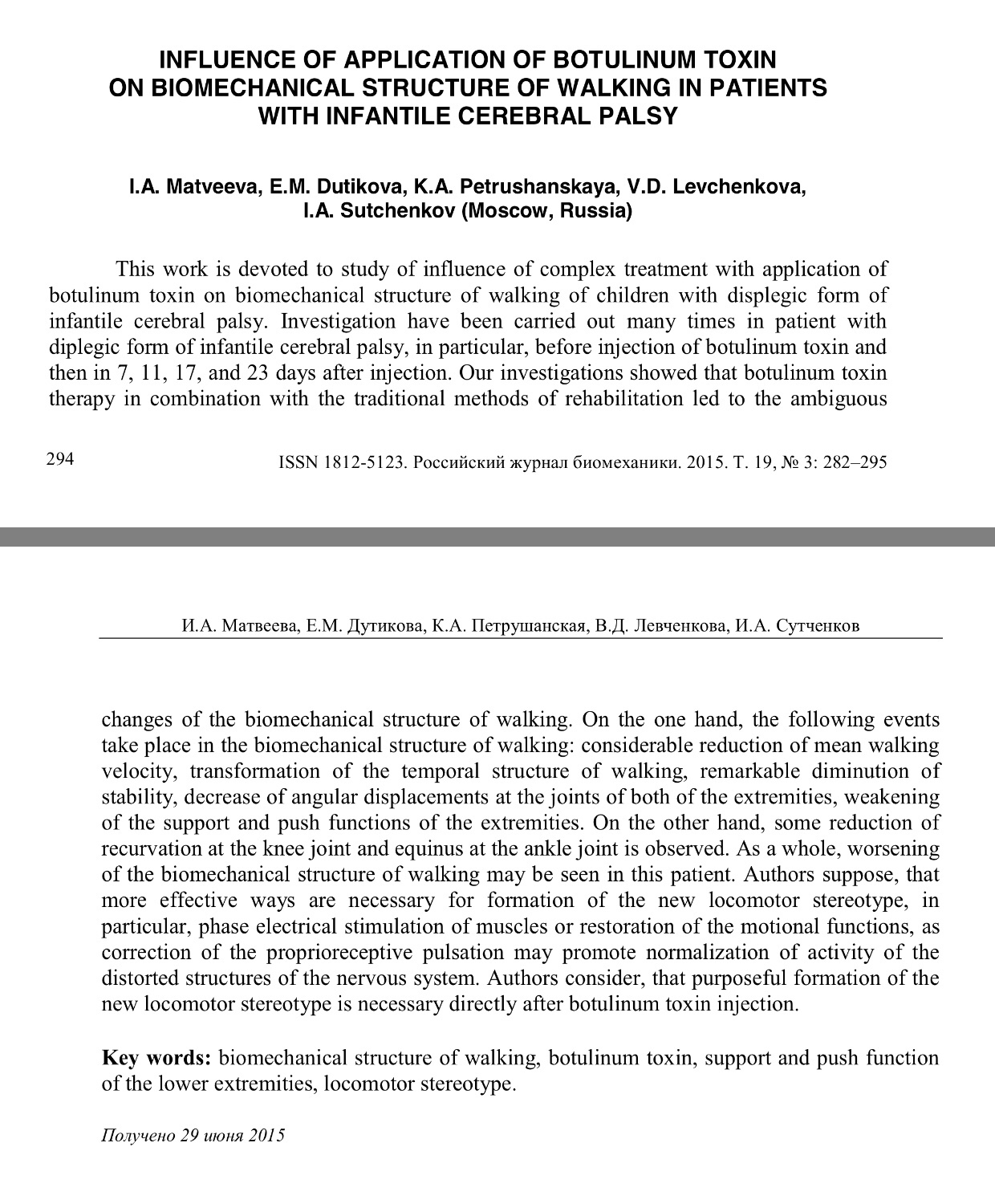Botox injections/ phenol blocks and ethyl alcohol blocks
I have to say : during our experience I did mistakes as well: one of them: I agreed to botox injections…..( I didn’t know much back in February 2016 one month after Marc anoxic injury….so I agreed to Dr experience…. what a fool I was….) ….so 1 time Botox experience horrible … painful without visible results in
2 months! But it was done for my son while his local anesthesia didn’t worked …so he was traumatized for 1 year with seringues after Botox injections…. ( even take a simple blood test for him was very very difficult more than 1 year after this terrible experience ….).
Last study I found about Botox: I advice you to read:

II. Botox
Mostly developed method fir CP but I am absolutely against (for walking child) I will not do for my son ….why?
Because it’s killing mussels and I give you some studies you must read about Botox:
Does the use of botox over long periods of time leads to decrease in its efficacy or atrophy of muscles?
I don’t know but I think that most clinicians will say that Botox will not prevent contractures but I’m not aware of any RCT type trial where patients have been followed long enough to establish if contractures developemnt is actually increased by Botox? But this is something that have been discussed, by clinicians as well as scientistc I would say . And feared by parents…I’m sure that you agree that other factors than spasticity cause contracture developemnt.
Read theses studies:
Study 2011:
https://onlinelibrary.wiley.com/doi/full/10.1111/j.1469-8749.2011.03950.x

And this : ( as I said I read in Russian but after Russian study you have conclusions in English) study 2015:

II. phenol blocks:
This is an old method that use to be used much more (in the 1970’s) and I had thought that it was largely abandoned with the availability of the baclofen pump and botox for specific muscle spasticity/spasms.
Because phenol damages the peripheral nerve, I decided to do a literature review to see if there are any recent studies on the subject, to see if there are any long term results….
Wong, et al. (2004) compared botox and phenol block on gait in children with cerebral palsy. They tested 27 ambulatory children with spastic cerebral palsy and found that the adverse effects of botox were less severe compared with phenol.
Most of the above studies are not randomized clinical trials. In 2002, van Kuijk, et al. did a literature search for randomized clinical trials (RCT) of neuronal and neuromuscular blockade, finding 4 RCTs for Botox and none for phenol. Although the evidence suggest that botox is safe, convincing evidence of efficacy was found only in two groups of patients: (1) patients with mild spasticity and a potential for voluntary extensor activity and (2) patients with severe spasticity suffering from problems of positioning.
Wolf & English (2000) studied the effects of peripheral nerve phenol block in rats and showed that it denervated muscle spindles (the sensors for muscle stretch) of both afferent (sensory) and gamma (motor control) fibers. After 6 weeks, most of the spindles (90%) showed return of the afferent fibers but only about a third (38%) showed return of gamma innervation.
I personally find this study interesting ( even if they found Botox good in short therm period)
It was interesting to read about ethyl alcohol and phenol .
As well as discussed mixture ethyl alcohol with ledocaine for dystonia ( and compared to injections for Wolff Parkinson’s wight syndrome by the way): but still we can have some adverse events like phlebitis….
http://botox2007.homestead.com/files/tratamientos_locales_espasticidad.pdf
